|
|
|
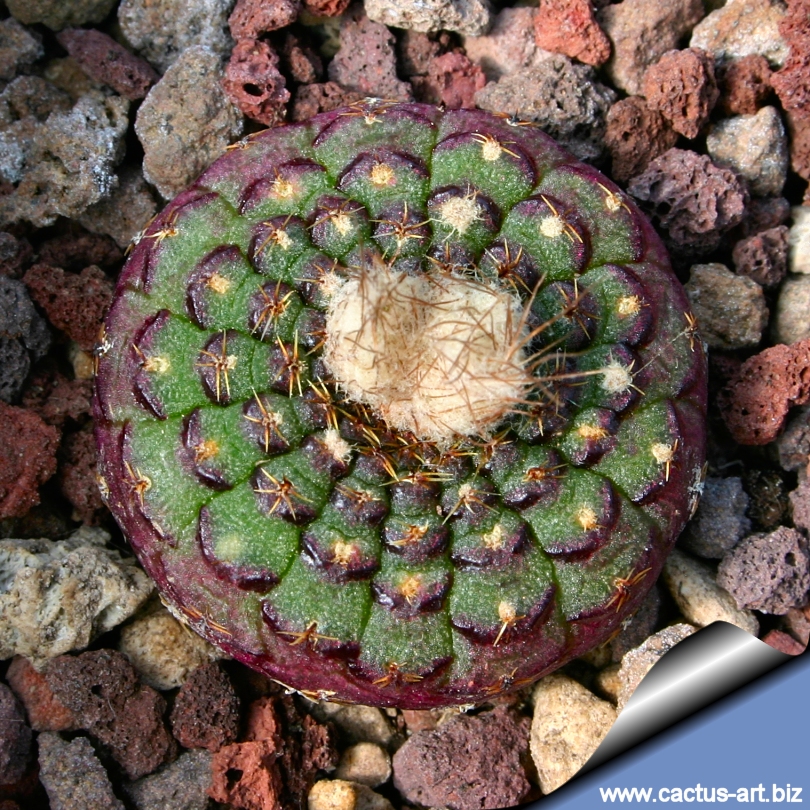
Frailea cataphracta has
10 to15 low and broad ribs. The
tubercles are dull green and flatted above, with a purple-brown lunate
(moon shaped), blots situated below the areoles.
|
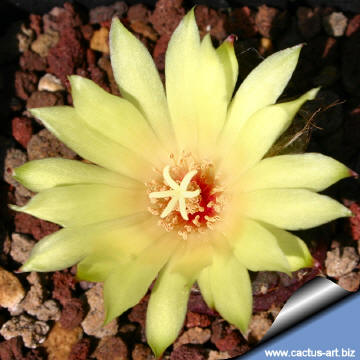
An unusual developed flower |

Buds |
|
. |
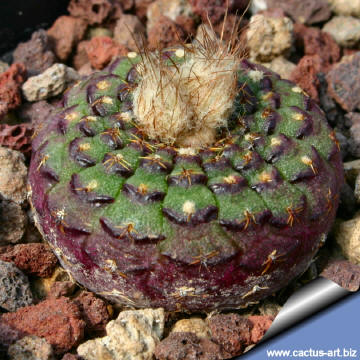 |
 |
|
. |
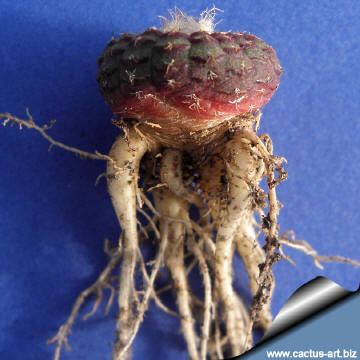 |
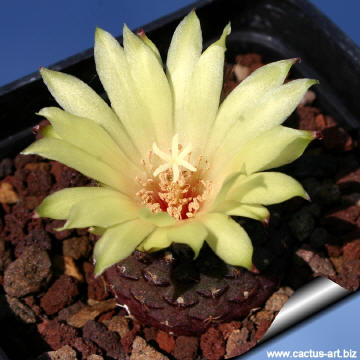 |
|


Advertising
|
|
|
|
|
Family:
Cactaceae (Cactus
Family)
Subfamily: Cactoideae
Tribe:
Notocacteae
Scientific Name:
Frailea cataphracta
(Dams) Britton & Rose 1922
Britton and Rose established the genus
Frailea in 1923 and Frailea cataphracta was
made a character species for the newly created genus.
Distribution: Cordilleras of
Altos Paraguay, Paraguay and brazil (South America)
Habitat: Grows in fine
sandy-loamy or fine grained but permeable soil often at the edge of
sandstone plates. Forms dense colonies in all sizes with over than
200.000 plants. The vegetation consists of grass and small brushes, with
no other cacti species present. Most of the Fraileas grow in half shadow
under the grasses and brushes and only few are exposed to full sun.
Climate is warm and humid. The rainfalls happen all around the year with
a relatively high amount of over 1500 mm with much thaw during the
night.
Conservation status: Listed in
CITES Appendix II
Synonyms:
- Echinocactus cataphractus
Dams
In: Monatsschr. Kakteenk. 14: 172. 1904 (Original pubblication)
- Echinocactus cataphractus
- Frailea uhligiana
- Frailea cataphractoides
- Frailea matoana
- Frailea melitae
Etymology:
The
genus name
"Frailea"
remembers
the Spanish "Manuel
Fraile",
born in 1850 who was responsible for the
cactus
collection of the
Department of Agriculture of the United States at the end of the XIX
century.
The
species name name
"cataphracta",
means armoured or mail-clad.
|
|
Description: F. cataphracta
is a very small depressed cactus that do usually not sprout in
nature, but in culture with age begins to clump around the base and grow
oddly. It is undoubtedly one of the most
fascinating cacti.
Stem: Dull-green and dark-brown or purplish, globose-flattened
1-2(-4) cm in diameter, deeply imbilicate at apex
Ribs: 10 to 15 with low and broad crescent-shaped tubercles
flatted above, with a purple-brown lunate, blots situated below the
areoles.
Radial spines: 5-9 straight 1-2 mm long, appressed, yellowish or
whitish.
Central spines: Absent.
Flower: Sulphur yellow from the top of the plant,
sometimes larger than the plant itself (4cm diameter). But don't be
disappointed when the easily produced
buds fail to open. Fraileas are
cleistogamous meaning that their flowers produce seed without even
opening. Without the need for
pollination, hence the buds rarely reach full
bloom and remain closed. They will open only in great heat in the
hottest, brightest, afternoon sun, if at all.
Fruit:
Dry
indehiscent with scales and bristles that detach easily,
pericarp
membranous, fragile that break easily releasing the seed.
Seeds: Comparatively large,
black and shining, up to 2 mm wide, with a triangular, deeply
concave face.
Crests of this species are also known and
very beautiful.
|
|
|
|

Flowers will open only in great heat on the
hottest, brightest, sunny afternoon , if at all and are larger than the
plant itself.
Cultivation: Grow them in
rich, porous soil and let them
dry out between waterings. These
plants need a minimum temperature of 5-10° C (but occasionally
temperatures of a few degrees below 0° are not dangerous)
Sun Exposure:
It
enjoys full sun,
and it can take on a near
black appearance when kept in bright light.
In a
shaded position the plants grow faster, but are not
flat shaped and dark coloured.
Characteristically, during the
dry season plants
retract completely
under the ground both in the
wild and in
cultivation too.
Notes: This plant is short
living (It does not live long - about 10-15 years).
Propagation:
With fresh harvested seeds or (rarely)
by
grafting.
|
|